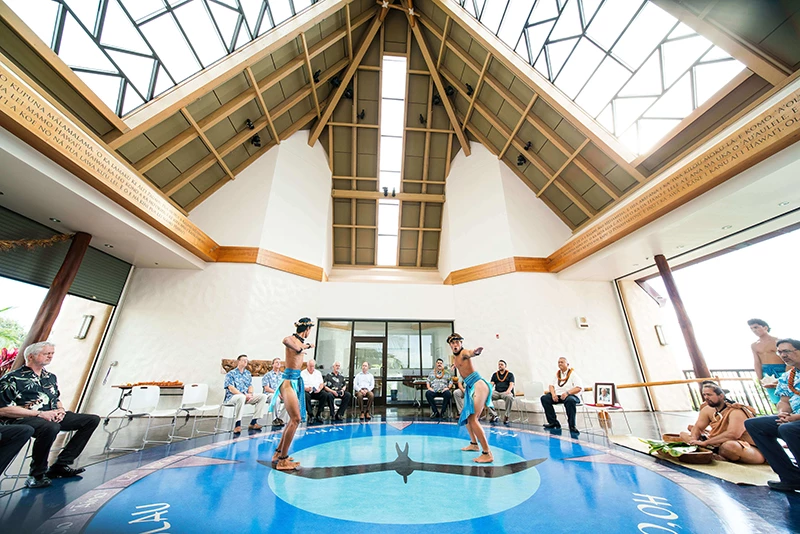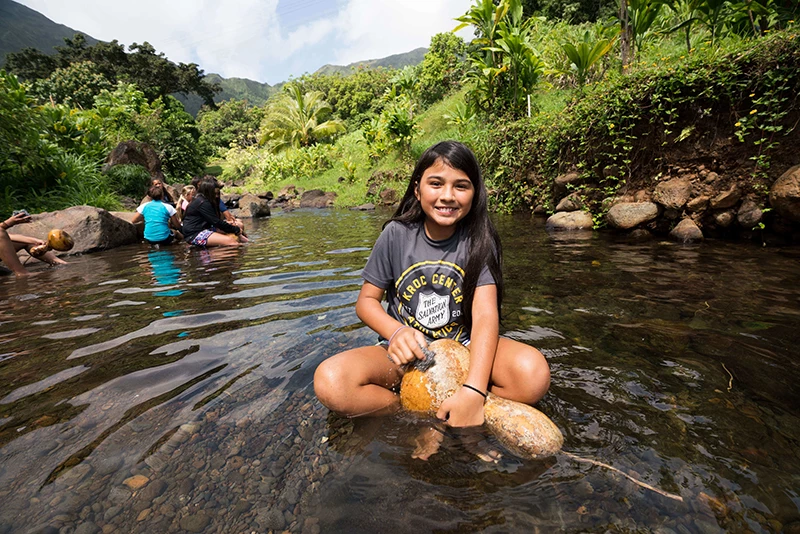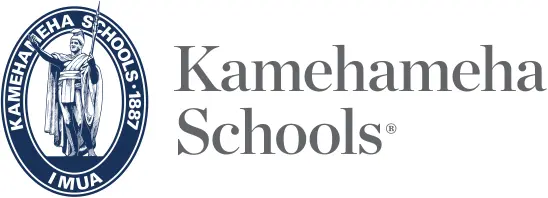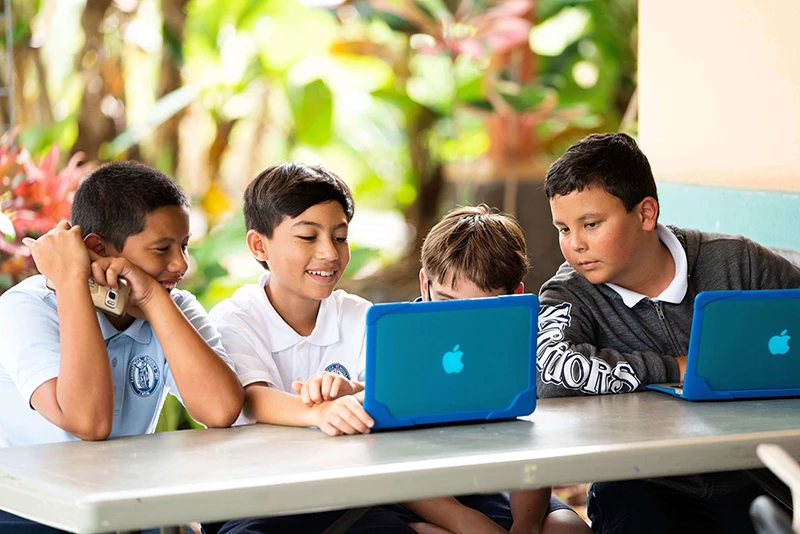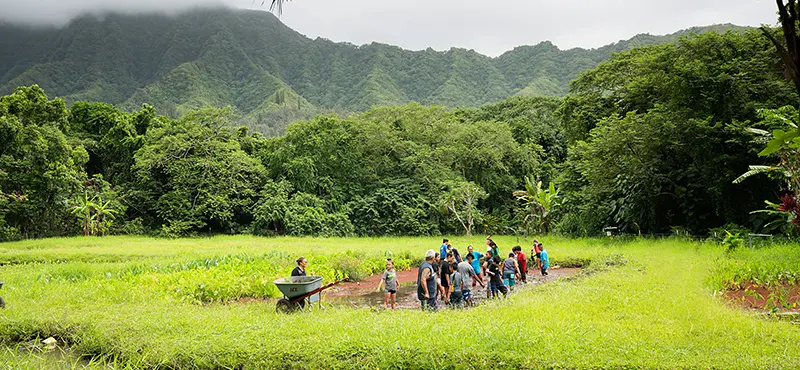Kamehameha Schools Kapālama haumāna were recently tasked with developing proposals for a campus microgrid – a small-scale electricity grid powered by local energy sources. The project was part of the school’s second annual Microgrid Challenge spearheaded by high school economics kumu Eric Okazaki.
A microgrid not only provides backup for a specific electricity grid in case of emergencies, but can be used to cut energy costs, and connect to a local resource that is too small or unreliable for traditional grid use. It also allows communities, such as the Kapālama campus, to be more energy independent and environmentally friendly.
The challenge was designed to not only test students’ skills and creativity, but to also connect the campus with industry-expert staff members at KS’ Honolulu headquarters, Kawaiaha‘o Plaza. It was inspired by a KS Strategic Plan 2020 message given to employees by Chief Executive Officer Jack Wong last year.
In his message Wong encouraged campuses to reach out to staff at Kawaiaha‘o Plaza and vice versa. Okazaki took those words to heart and reached out to KS Sustainability Manager Amy Brinker for kōkua.
“I was happy to collaborate and saw this as an opportunity to increase the students’ understanding and awareness about energy-use on campus and dream big about future energy efficiency, conservation, and generation potential,” Brinker said.
Seventy-one KSK students formed 12 teams, each developing an energy-saving microgrid plan. To aid in their design process, the haumāna learned about sustainability topics including air conditioning, lighting, behavior change, and photovoltaics from guest speakers.
Judges chose three teams with the most feasible plans. Each of the winning teams received prizes from event partner Hawaii Energy.
“Aside from learning about energy, [the Microgrid Challenge] is an opportunity for exposure to less obvious career paths as these students contemplate choices after graduation,” Brinker said.
Students learned about return-on-investment and financial decision-making from KS Investment Reporting Manager Daniel Loo. They also had the opportunity to hear from KS Hawaiian Resource Specialist Earl Kawa‘a, who encouraged students to lean on their ancestors and present their proposals from a Hawaiian perspective.
“These opportunities for cross-organizational collaborations are significant for KS,” Brinker added.
“Our staff that typically work out of administrative offices are able to see the keiki they are working for. Likewise, the campuses benefit from the tremendous ʻike and passion that our non-campus staff can bring into the classroom.”
Mahalo!
KS Sustainability Manager Amy Brinker extends a heartfelt “mahalo” to the speakers and judges from the first and second annual Microgrid Challenge:
Ella Aki
KS sustainability fellow
Vance Arakaki
Kālai Hawaiʻi
John Bendon
Green Building Hawaii
June Chee
KUPU
Diane Filibeck
KYA Sustainability Studio
Tad Glauthier
STEM
Chelsea Harder
Hawaii Energy
Earl Kawa‘a
Hawaiian Resource Specialist
Daniel Loo
KS Investment Reporting
Maxwell Mukai
KS sustainability fellow
Ken Patterson
Advanced Energy Innovations, Inc.
Peter Stone
Green Building Hawaii
Ian Tierney
KYA Sustainability Studio
Lindsay Wong
KYA Sustainability Studio
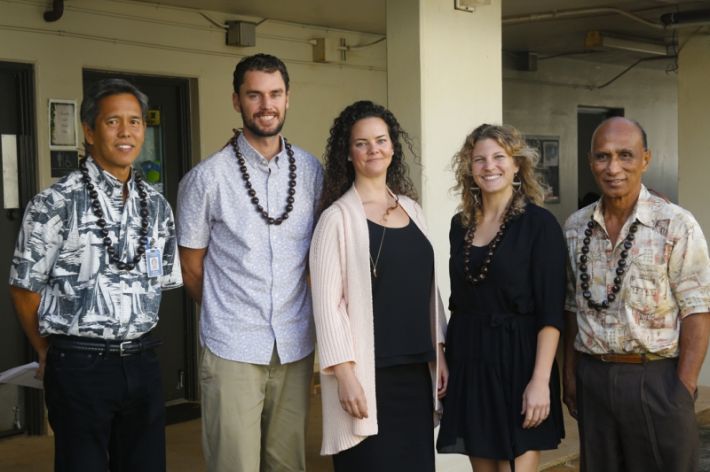
Sustainability Manager Amy Brinker (center) gathers with this year’s challenge judges, including KS Treasurer Daniel Loo, Ian Tierney of KYA Sustainability Studio, Chelsea Harder of Hawaii Energy and KS Hawaiian Resource Specialist Earl Kawa‘a.
TAGS
CATEGORIES
Kaipuolono Article, Newsroom, Campus Programs, Kapalama
Print with photos
Print text only

